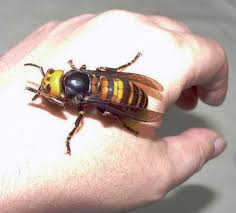Environmental peoblems
Madagascar
allocates resources to fight locust plague

September
27, 2013 – MADAGASCAR – More
than a year after a locust plague was declared in Madagascar, a
control program finally is about to begin. Massive swarms of the
insects have damaged or destroyed large areas of cropland and
pastures. Aerial and ground surveys are underway in Madagascar to
map the locations of the Malagasy migratory locust swarms. Annie
Monard, locust response coordinator for the U.N. Food and
Agriculture Organization, currently is in Madagascar. Monard was
among those who sounded the alarm over a year ago. It is a plague –
no doubt concerning that. It’s a plague because numerous locust
swarms escaped the outbreak area. The declaration of plague was made
in April 2012.” Despite the announcement of a locust emergency,
the response was slow to develop. That allowed the swarms to spread
even further from the southwest where they’re endemic. The
problem began several years earlier when the last control program –
funded by the African Development Bank – ended. The FAO launched
emergency campaigns in 2010, 2011 and 2012, but they were not enough
to stop the locust plague from developing. “What we did and what
FAO does for many, many years is always to promote what we call
preventive control strategy. Unfortunately, there are always some
situations during which it is not possible to apply the preventive
strategy; and progressively the locust situation deteriorated,
arising at the level we have now,” she said.
Then
late last year, Monard said Madagascar’s agriculture minister
requested the FAO’s help in developing a new spraying campaign.
That is now scheduled to be conducted in three stages, between
October of this year and September 2016. Total cost of the
three-year campaign is over $41-million. “For the time being, we
got from a wide range of donors the budget for the first year. But
we have still to advocate and to get the budget for the two
following campaigns, which will allow us and allow the country to go
back to a recession situation,” she said. The FAO has raised
$23 million dollars for the first year of the campaign. The
focus of the spraying will be on hopper bands, when the locusts are
still wingless. Hoppers are more sensitive to pesticides that are
less harmful to the environment, including those that contain a
fungus. Besides spraying hoppers directly, pesticides will be used
to create barriers or buffer zones. This is done by spraying the
ground every 600 to 800 meters. It’s estimated that of the
13 million people at risk, about nine million are directly dependent
on agriculture for food and income. In some regions, 70 percent of
the rice and maize crops have been damaged. As the control program
gets underway, the locusts are expected to move to the north where
the more productive agricultural lands are located.
28
killed, hundred injured by swarms of giant hornets in China


September
26, 2013 – CHINA - Twenty-eight
people have died and hundreds have been injured in a wave of attacks
by giant hornets in central China, according to reports. Victims
described being chased for hundreds of meters by the creatures and
stung as many as 200 times. Most of the attacks in the past three
months were in remote, rural, wooded areas in southern Shaanxi, the
province’s China Business newspaper reported. In the city of
Ankang alone, 18 people have died from the stings, health official
Zhou Yuanhong told Associated
Press.
People in the cities of Hanzhong and Shangluo have also been
injured. The insects’ highly toxic stings can lead to anaphylactic
shock and renal failure. An official from Ankang’s disease control
centre urged people to seek medical help if they received more than
10 stings, and warned that emergency treatment was required for
those stung more than 30 times. One woman in her 50s said she had
spent almost a month in hospital and was still incontinent after
receiving more than 200 stings. A man from her village died of
kidney failure.
The
hornet attacks are a recurring problem in the area from May to as
late as November. According to Ankang police, 36 people died in the
city and 715 were injured by the creatures between 2002 and 2005.
But Zhou said the issue had been particularly severe this year,
possibly because of weather changes. Experts have suggested in the
past that warmer temperatures in the area have led to hornets
breeding more successfully, that laborers have been moving deeper
into areas where they may disturb nests, and that the insects are
sensitive to chemicals found in food and cosmetics. Li Jiuzhou,
deputy director of the Shaanxi Bee and Wasp Industry Association,
said that hundreds or even thousands of hornets could live in a
single nest. They attack humans only if disturbed, he added. But
they are carnivorous and can quickly destroy bee colonies. Ankang’s
fire service has removed over 300 hornet nests this summer, but
experts said that the problem was unlikely to end entirely until the
temperature drops. Wang Zhengcai, an official from one of the
affected villages, said authorities had warned people to be careful
if they enter the woods. Local authorities have also promised to
help patients pay for the treatment, because of the heavy cost for
the rural poor. The culprit appears to be the Asian giant hornet
or Vespa
mandarinia,
which grows up to 5cm long with a 6mm sting, although the area is
also home to the smaller Asian hornet, Vespa
velutina nigrithorax.
No comments:
Post a Comment
Note: only a member of this blog may post a comment.